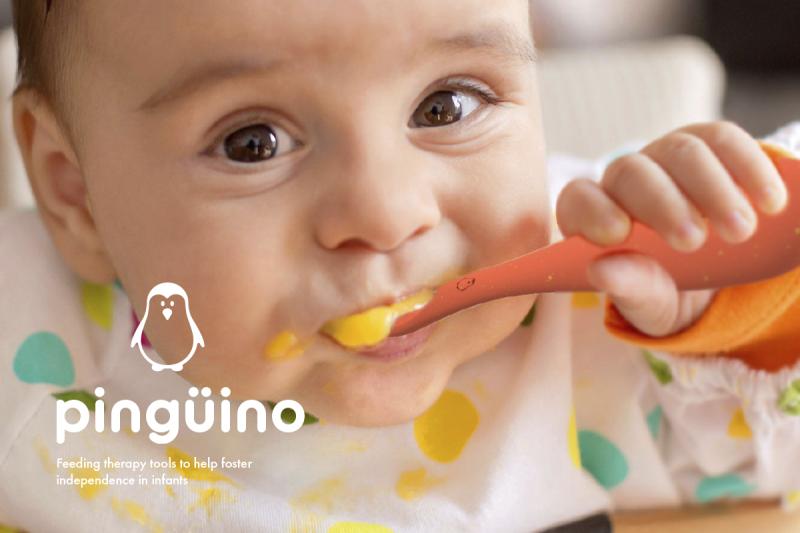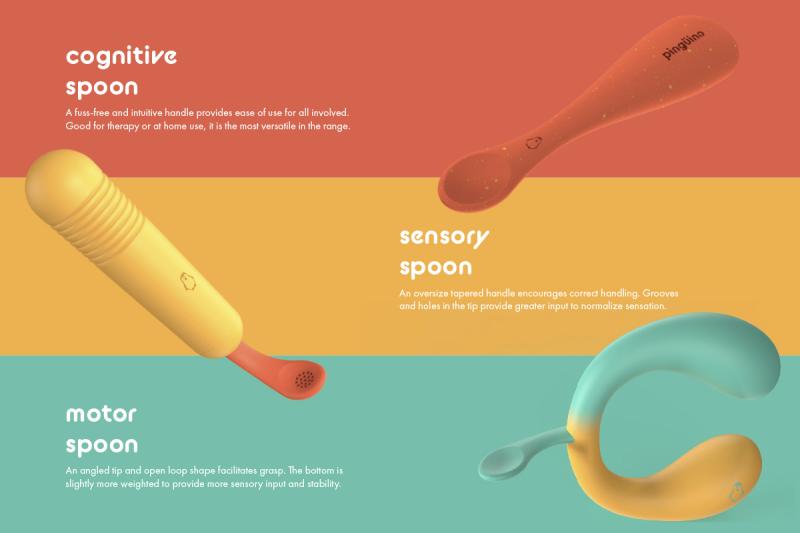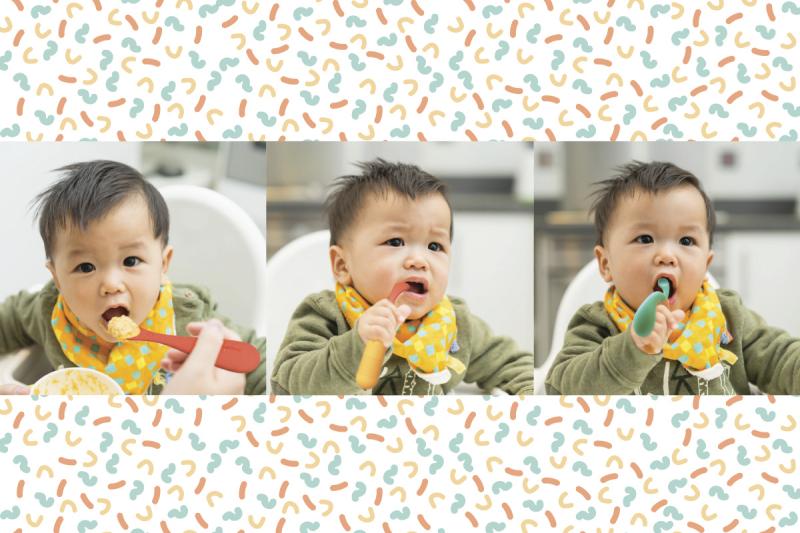Pingüino
Alessia Espejo
Industrial Design, 2019
Pingüino is a set of feeding therapy tools to help foster independence in infants. Children who are diagnosed with cognitive, sensory or motor disorders can struggle to participate and benefit from the experience of learning how to eat independently.
Each spoon in the range is designed to target specific feeding-related issues that are associated with disorders falling within in all three main categories. The goal is to create a more positive at home experience as well as supplement occupational therapy teachings.
Pingüino spoons are made in bright and distinguishable colors, paired with soft silhouettes to provide a friendly and fun aesthetic. A smaller than average spoon tip, with a narrow flat profile and shallow spoon bowl facilitates lip closure and prevents over-feeding. The size also ensures that quality of feeding is prioritized over quantity of food. Oversized handles with added sensory input allow for more spatial and oral awareness helping oral and motor development. All three spoons are made out of soft food-grade silicone to make sure that they are safe and accessible for all.
The cognitive spoon was designed to be versatile and intuitive, it can be utilized by the caretaker as well as the therapist if needed. The sensory spoon has an oversized and tapered handle to encourage proper handling near the spoon tip, while added textures help to normalize sensation. Lastly, the motor spoon’s form was designed to help facilitate grasp, while the added weight at the bottom of the handle helps provide stability.




